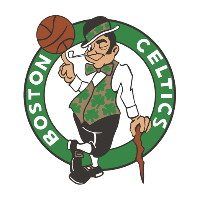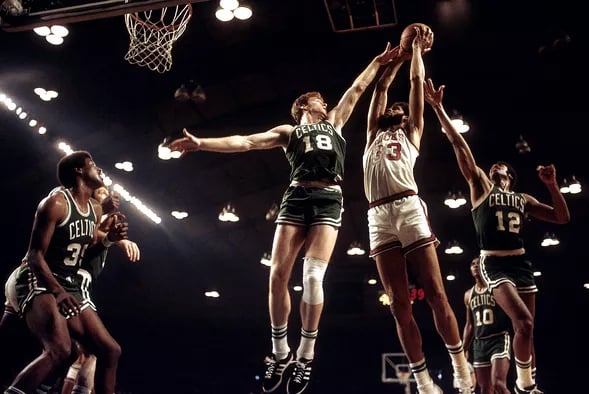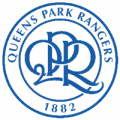
Boston Celtics

1945 Boston
The Boston Celtics, an iconic National Basketball Association (NBA) franchise, represent more than just a basketball team; they are a living legacy that reflects the history, perseverance and competitive spirit of the sport. Founded in 1946, the Celtics have established themselves as one of the most successful and recognizable franchises in NBA history, not only for their impressive number of championships, but also for their influence on the evolution of the game, the culture of basketball and their impact on communities inside and outside of Boston.
Forging a Dynasty: The Red Auerbach Years
The Red Auerbach era began in 1950 and marked the beginning of an unprecedented dynasty in professional basketball. Auerbach, known for his cunning and innovative approach to the game, transformed the Celtics into an unstoppable powerhouse. Under his leadership, the team adopted a fast-paced, counter-attacking style of play and aggressive defense that allowed them to dominate the league throughout the 1950s and 1960s. The arrival of Bill Russell in 1956, who would become a mainstay of the Celtics and one of the greatest defenders in NBA history, was pivotal. Along with legends like Bob Cousy, John Havlicek and Sam Jones, Russell led the Celtics to a record 11 championships in 13 years, including an unprecedented streak of eight consecutive titles between 1959 and 1966.
The Era of Transition and Renewal
Following Auerbach's retirement as coach in 1966, the Celtics faced periods of transition, but remained competitive. The 1970s saw the Celtics adjust to the departure of their legends, but under the guidance of new leaders such as Dave Cowens, John Havlicek and Jo Jo White, Boston managed to capture two more titles in 1974 and 1976. This era was characterized by the Celtics' resilience and ability to reinvent themselves, maintaining their competitiveness in the NBA despite significant roster and team management changes.
1980s Dominance: The Rivalry with the Los Angeles Lakers
The 1980s revived the Celtics' greatness through an intense rivalry with the Los Angeles Lakers, marking one of the most memorable eras in NBA history. With the acquisition of Larry Bird in 1979, the Celtics ushered in a new era of success, characterized by smart play, excellent outside shooting and intense competitiveness. Bird, along with Kevin McHale and Robert Parish, formed "The Big Three," leading Boston to three NBA championships in 1981, 1984 and 1986. This era was notable not only for on-court success, but also for the cultural impact of the Celtics-Lakers rivalry, fueling national and international interest in the NBA.
Overcoming Challenges: The 1990s and Rebuilding.
The 1990s was a challenging period for the Celtics, marked by the early death of promising star Reggie Lewis in 1993 and the retirement of Larry Bird due to chronic back injuries. These events symbolized the end of an era and the beginning of a long rebuilding process. Despite these challenges, the Celtics strived to rebuild their team through the draft, the development of young talent and strategic moves in free agency, albeit without reaching previous levels of success.
Rebirth in the 21st Century: The New "Big Three".
The Celtics' rebirth materialized in the 2007-2008 season with the formation of a new "Big Three" - Paul Pierce, Kevin Garnett and Ray Allen. This era marked the Celtics' return to the pinnacle of NBA basketball, culminating in the 2008 championship win over their archrivals, the Lakers. This victory not only marked the franchise's seventeenth title, but also reaffirmed the Celtics' legacy as a symbol of excellence and resilience in sports. Tenacious defense, team play and dedication were the keys to their success, reviving the Celtics' rich tradition in a new era.
DT Garden, home of the Celtics
The history of the TD Garden, the home of the Boston Celtics since 1995, is a fascinating chapter that reflects the evolution of the franchise and its deep roots in the city of Boston. Replacing the historic Boston Garden, which had been the home of the Celtics from their founding in 1946 until 1995, the TD Garden not only represents a modernization in terms of facilities for the team, but also a new home for the Celtics.rms of facilities for the team and its fans, but also a renewal of the spirit and tradition that have characterized the Celtics over the years. The new arena was designed to offer a first-class spectator experience, with state-of-the-art technology, enhanced amenities and a capacity to accommodate more than 19,000 fans during basketball games. In addition to being the site of numerous memorable moments in recent Celtics history, the TD Garden has served as a cultural focal point for the city of Boston, hosting a wide range of sporting events, concerts and performances. The construction of the TD Garden symbolized not only the transition into a new era for the Celtics, but also the franchise's continued commitment to excellence and its connection to the Boston community. In this venue, the Celtics have not only continued their legacy of success, but have also forged new memories that add to the franchise's rich history, proving that while the venues may change, the spirit and passion for basketball remain unchanged.








































